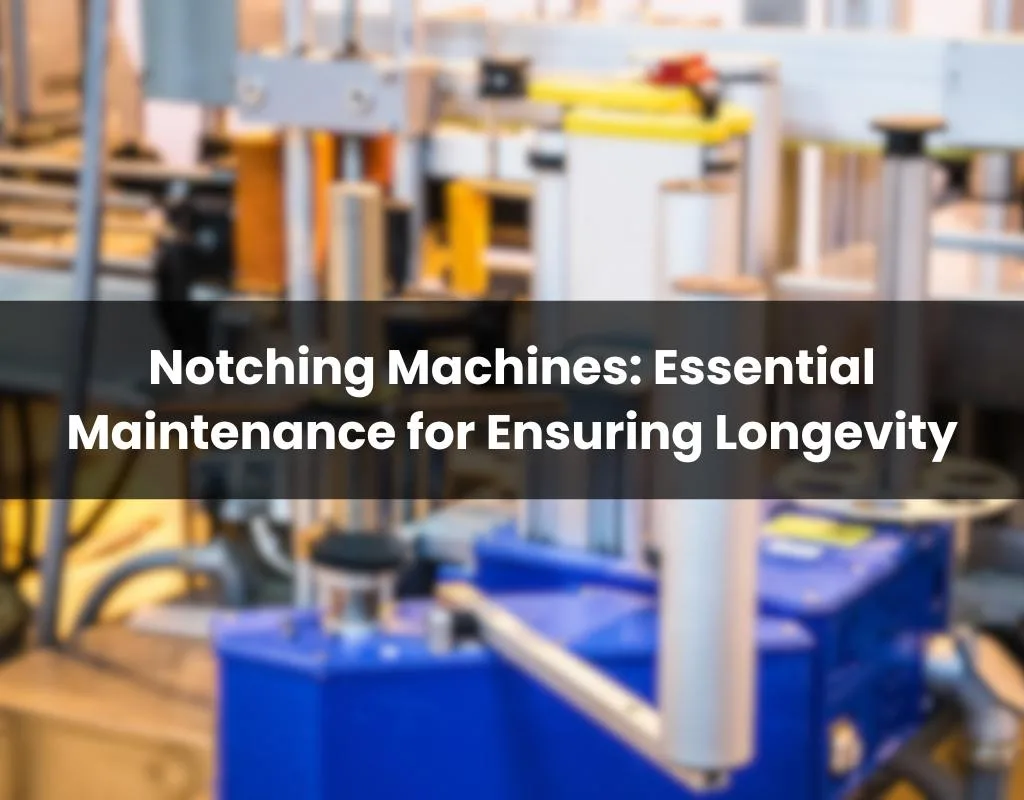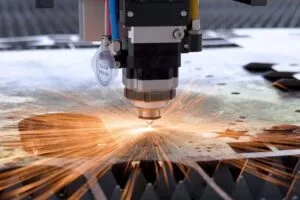Notching machines, the unsung heroes of industries ranging from metal fabrication to aerospace, are indispensable tools in the creation of precise and clean notches in a myriad of materials. The integrity and functionality of the final product hinge on the accuracy of these notches. However, like any piece of machinery, notching machines are not immune to wear and tear. Over time, their performance can degrade, leading to less accurate notches and, ultimately, a lower quality end product. To prevent this from happening, regular and thorough maintenance is essential.
In this comprehensive guide, we delve into the key aspects of maintaining your notching machine to ensure its longevity and optimal performance. We will explore everything from routine inspections and cleaning to more complex tasks such as part replacement and calibration. By following these guidelines, you can keep your notching machine running smoothly and efficiently for years to come.
Table of contents
1. Understanding Your Notching Machine
2. Routine Checks and Cleanliness
3. The Importance of Notching Machine Maintenance
4. Advanced Maintenance Techniques for Notching Machines
6. Extending the Lifespan: Best Practices and Strategies
1. Understanding Your Notching Machine
When it comes to operating and maintaining a notching machine, having a solid grasp of its technical features is essential. Let’s delve into the key components that you should be familiar with:
1.1 Introduction to Notching Machines
Notching machines are essential equipment used for precision cutting of metal plates. Two primary types of notching machines exist: adjustable angle and non-adjustable. The adjustable angle range typically spans from 40° to 135°, allowing operators to fine-tune the cutting position within this range. The main structure of a notching machine is constructed from robust and durable steel plates. Unlike punch presses, which require separate molds for specific angles or thicknesses, notching machines offer several advantages:
- Cost-Effectiveness: Lower operational costs compared to punch presses.
- Reduced Hassle: Eliminates frequent die changes and clamping associated with regular punches.
- Enhanced Work Efficiency: Streamlines the metal plate shearing process.
- Decreased Labor Intensity: Operators experience less physical strain.
- Risk Reduction: Minimizes safety hazards for workers.
- Quiet Processing: Creates a peaceful working environment in factories.
Notching machines find applications across various industries, including automobile manufacturing, shipbuilding, elevators, electrical equipment, pipes, cookware, and stainless steel products.
1.2 Types of Notching Machines
Notching machines can be categorized into three main types:
a. Pedal-Operated Notching Machines
The pedal mode of operation, as the name suggests, is activated using a foot pedal. This design reduces labor involvement and significantly enhances work efficiency. Pedal-operated notching machines are ideal for small-scale operations where manual control is preferred.
b. Pneumatic Notching Machines
Pneumatic notching machines utilize compressed air to power their cutting mechanisms. These machines offer precise and rapid cutting, making them suitable for various materials and thicknesses. Their compact design and ease of operation contribute to their popularity in sheet metal processing.
c. Hydraulic Notching Machines
Hydraulic notching machines operate using hydraulic power. They can be further divided based on the angle of the blades at both ends:
- Adjustable Angle Hydraulic Notching Machines:
- These machines boast a broad range of cutting angles (typically 40-135 degrees) and remarkable cutting accuracy.
- The angle can be adjusted within this range, allowing for optimal cutting results.
- Suitable for cutting various materials with different thicknesses.
- Can be adjusted for symmetrical or asymmetrical processing.
- Leaves a smooth finish on the cut edge of the plate.
- Fixed Angle Hydraulic Notching Machines:
- These machines have a fixed shearing angle of 90 degrees.
- Provide fast cutting speed, compact structure, and ease of operation.
- Ideal for applications where a consistent angle is required.
1.3 Key Technical Aspects of Notching Machines
1.3.1 Throat Depth
The throat depth is the measurement from the edge of the machine’s frame to the centerline of the cutting tool. It defines how deeply the machine can notch into the material. A greater throat depth accommodates larger workpieces, while a shallower throat is suitable for smaller materials.
1.3.2 Material Thickness Capacity
Understanding the material thickness capacity is critical. This specification indicates the maximum material thickness that the notching machine can handle. Exceeding this limit may lead to suboptimal results or even damage the machine.
1.3.3 Tonnage
Tonnage refers to the force exerted by the machine during the notching process. Knowing the machine’s tonnage capacity is essential. Inadequate tonnage can result in incomplete notches, while excessive tonnage may cause material deformation or wear on machine components.
1.3.4 Stroke Length
The stroke length represents the distance the cutting tool travels during each cycle. It directly impacts the depth of the notch. By adjusting the stroke length, operators can tailor the notch depth to specific requirements.
1.3.5 Speed (SPM)
The speed, measured in strokes per minute (SPM), determines how rapidly the machine operates. Achieving a balance between speed and precision is crucial. While higher SPM can enhance productivity, excessively high speeds might compromise notch quality.
Maintenance Considerations
Now that you’re acquainted with these technical aspects, let’s discuss maintenance. Regularly inspect and lubricate moving parts, check for wear on blades and dies, and ensure proper alignment. Clean debris and chips to prevent clogs and maintain optimal performance.
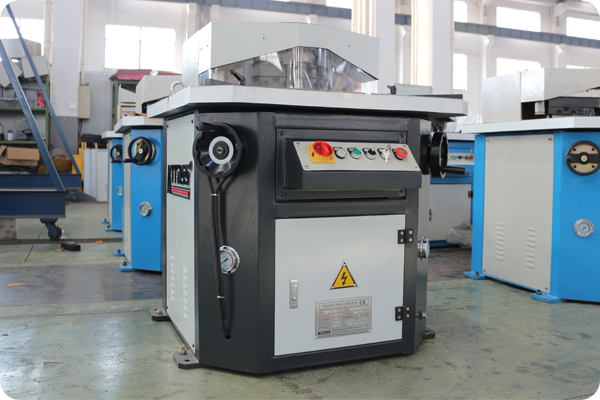
2. Routine Checks and Cleanliness
Regular maintenance checks are crucial to ensure the optimal performance and longevity of your notching machine. By adhering to routine inspections and cleanliness practices, you can prevent downtime, maintain accuracy, and extend the lifespan of this essential equipment.
2.1 Inspect for Wear and Tear
Regularly examine your notching machine for any signs of wear and tear. Pay close attention to critical components such as:
- Blades: Check the condition of the blades. Dull or damaged blades can lead to imprecise notches and affect the overall quality of your work.
- Guides: Inspect the guides that direct the material through the machine. Misaligned or worn guides can cause irregular notches.
- Clamps: Ensure that clamps are functioning correctly. Loose or malfunctioning clamps may result in material slippage during the notching process.
2.2 Material Removal
Chips, swarf, and other debris can accumulate during machine operation. Regularly remove these particles from both the machine and the workspace. Here’s why it matters:
- Machine Performance: Accumulated debris can hinder the smooth movement of parts, affecting the machine’s accuracy and efficiency.
- Tool Life: Debris buildup can cause premature wear on blades and other components, reducing their lifespan.
- Safety: A clean workspace reduces the risk of accidents and ensures operator safety.
2.3 Lubrication and Cleaning
Proper lubrication is essential for smooth machine operation. Follow these guidelines:
- Lubricate Moving Parts: Apply lubricant to moving parts such as pivot points, slides, and bearings. Refer to the manufacturer’s recommendations for the appropriate lubricant type and frequency.
- Clean Cutting Surfaces: Regularly clean the cutting surfaces to remove residue and prevent material buildup. Use a suitable cleaning agent and ensure thorough drying before resuming operation.
2.4 Alignment and Calibration
Maintain proper alignment and calibration:
- Check Blade Alignment: Ensure that the blades are aligned correctly. Misalignment can lead to uneven notches.
- Calibrate Stroke Length: Adjust the stroke length to achieve the desired notch depth. Refer to the machine’s manual for precise instructions.
2.5 Record Keeping
Keep detailed records of maintenance activities:
- Maintenance Schedule: Create a regular maintenance schedule based on machine usage and manufacturer recommendations.
- Maintenance Logs: Document inspections, cleaning, lubrication, and any repairs performed. This helps track trends and identify recurring issues.
3.The Importance of Notching Machine Maintenance
Notching machines play a crucial role in metal fabrication, allowing precise cutting of metal plates. Proper maintenance of these machines is essential to ensure their longevity, consistent performance, and safety. Let’s delve into the significance of notching machine maintenance.
3.1 Enhanced Efficiency and Productivity
Regular maintenance ensures that notching machines operate optimally. By adhering to maintenance schedules, you prevent unexpected breakdowns and minimize downtime. Well-maintained machines can handle higher workloads efficiently, leading to increased productivity in your metal fabrication processes.
3.2 Consistent Cutting Accuracy
Accurate notching is critical for achieving precise angles and dimensions in metal plates. Neglecting maintenance can lead to blade misalignment, resulting in irregular cuts. Routine checks and adjustments ensure that the machine maintains its cutting accuracy, reducing material wastage and rework.
3.3 Safety Assurance
A well-maintained notching machine is safer for operators. Faulty components or loose connections can pose risks, leading to accidents or injuries. Regular inspections help identify potential hazards, allowing timely repairs and replacements. Safety protocols should include checking emergency stop buttons, electrical systems, and protective guards.
3.4 Cost Savings
Investing in preventive maintenance pays off in the long run. Timely repairs are often less expensive than major breakdowns. Additionally, preventive measures reduce the need for emergency repairs, which can be costly and disrupt production schedules. By avoiding unplanned downtime, you save both time and money.
3.5 Quality Assurance
Consistent maintenance ensures that the notching machine consistently produces high-quality cuts. Whether you’re working with stainless steel, aluminum, or other materials, maintaining the machine’s performance directly impacts the final product’s quality. Well-maintained machines contribute to customer satisfaction and uphold your reputation.
3.6 Compliance with Regulations
In many industries, adherence to safety and environmental regulations is mandatory. Regular maintenance helps keep your notching machine compliant with industry standards. Properly functioning machines reduce the risk of accidents and environmental incidents, ensuring a smooth operation within legal boundaries.
Conclusion
Notching machine maintenance is not just a routine task; it’s an investment in efficiency, safety, and overall business success. By prioritizing regular checks, lubrication, and timely repairs, you can maximize the benefits of your notching machine while minimizing risks and costs.
4.Advanced Maintenance Techniques for Notching Machines
Maintaining a notching machine at peak performance requires more than routine checks and basic cleanliness. To ensure longevity, precision, and safety, consider implementing these advanced maintenance techniques:
4.1 Vibration Analysis
- Why It Matters: Excessive vibration can lead to premature wear, misalignment, and reduced accuracy. Implement regular vibration analysis using specialized tools to detect any anomalies.
- Procedure:
- Secure the machine in its operational position.
- Use accelerometers or laser vibrometers to measure vibrations during operation.
- Analyze the frequency spectrum to identify potential issues.
- Address any imbalances, loose components, or misalignments promptly.
4.2 Thermal Imaging
- Why It Matters: Heat buildup can affect notching machine components, leading to accelerated wear and decreased performance.
- Procedure:
- Use a thermal imaging camera to scan critical areas during operation.
- Identify hotspots, which may indicate friction, inadequate lubrication, or electrical issues.
- Investigate and address the root cause of excessive heat promptly.
4.3 Precision Calibration
- Why It Matters: Accurate notches depend on precise calibration. Regularly calibrate critical parameters to maintain consistent results.
- Procedure:
- Calibrate the stroke length, tonnage, and blade alignment.
- Use precision measuring tools to verify the notch depth.
- Adjust as needed to meet specifications.
4.4 Component Balancing
- Why It Matters: Unbalanced components can cause uneven wear and affect notching quality.
- Procedure:
- Balance moving parts such as flywheels, pulleys, and cutting tools.
- Use dynamic balancing machines or specialized services.
- Regularly check and rebalance components to prevent wear and vibration.
4.5 Lubrication Optimization
- Why It Matters: Proper lubrication ensures smooth operation and minimizes wear.
- Procedure:
- Analyze lubrication points and usage patterns.
- Use high-quality lubricants suitable for specific components.
- Implement automatic lubrication systems where applicable.
- Monitor lubricant levels and replenish as needed.
4.6 Predictive Maintenance
- Why It Matters: Anticipate failures before they occur to prevent unplanned downtime.
- Procedure:
- Collect data on machine performance, temperature, and vibration.
- Implement condition monitoring systems.
- Set up alerts for deviations from normal operating parameters.
- Schedule maintenance based on predictive analytics.
4.7 Training and Documentation
- Why It Matters: Well-trained operators and documented procedures enhance maintenance effectiveness.
- Procedure:
- Train operators on proper machine usage, maintenance, and safety.
- Create detailed maintenance manuals.
- Record maintenance activities, including dates, procedures, and outcomes.
- Continuously update documentation based on experience and improvements.
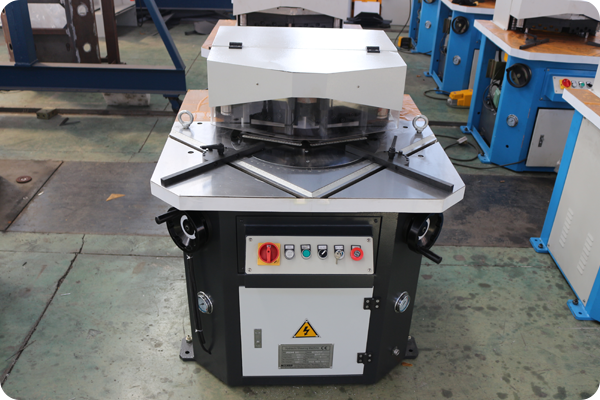
5.Safety Measures
5.1 Key Components of a Notching Machine
5.1.1 Electrical System
The electrical system is the nerve center of a notching machine. Regular inspections are essential to prevent unexpected downtime and ensure safe operation. Here’s how to maintain it effectively:
- Inspect Wiring: Check all electrical connections for signs of wear, loose wires, or damage. Tighten loose connections and replace damaged wires promptly.
- Switches and Relays: Test switches, relays, and control panels regularly. Faulty switches can disrupt the machine’s operation and compromise safety.
- Grounding: Verify proper grounding to prevent electrical shocks and ensure stable performance.
5.1.2 Safety Guards
Safety guards protect operators from accidental contact with moving parts during machine operation. Keeping them in optimal condition is vital:
- Visual Inspection: Regularly inspect safety guards for cracks, missing parts, or misalignment. Replace damaged guards promptly.
- Functionality Check: Test safety interlocks to ensure they stop the machine when guards are opened. Adjust or repair as needed.
- Operator Training: Train operators on the importance of safety guards and their correct usage.
5.1.3 Hydraulic System
The hydraulic system powers the cutting mechanism in notching machines. Proper maintenance ensures smooth operation and prevents leaks:
- Fluid Levels: Monitor hydraulic fluid levels regularly. Low fluid levels can lead to pump damage and reduced performance.
- Leak Detection: Inspect hoses, fittings, and seals for leaks. Address any leaks promptly to prevent contamination and system failure.
- Pressure Adjustment: Maintain the recommended hydraulic pressure. Adjust as needed based on material thickness and cutting requirements.
5.2 Safety Measures for Notching Machines
5.2.1 Personal Protective Equipment (PPE)
Operators must wear appropriate PPE to minimize risks during machine operation:
- Safety Glasses: Protect eyes from debris, sparks, and flying particles.
- Appropriate Clothing: Avoid loose-fitting clothes that could get entangled in moving parts.
- Gloves: Use gloves to handle materials and components safely.
5.2.2 Machine Operation
- Stop Cutter Before Adjustments: Always stop the cutter before making any adjustments. This prevents accidental activation and potential injuries.
- Avoid Overloading: Exceeding the machine’s capacity strains components and compromises safety. Refer to the manufacturer’s guidelines.
- Secure Workpieces: Properly clamp or secure workpieces to prevent movement during cutting.
5.2.3 Emergency Procedures
- Emergency Stop: Familiarize yourself with the emergency stop button’s location. Use it in case of malfunction or imminent danger.
- Disconnect Power: If the machine malfunctions, disconnect it from the power source to prevent further damage.
- Access to Support: Ensure access to technical support and spare parts for timely assistance during emergencies.
Conclusion
A well-maintained notching machine contributes to productivity and workplace safety. Regular inspections, adherence to safety measures, and operator training are essential. By following these guidelines, you can maximize the lifespan of your notching machine and ensure efficient, safe operation.
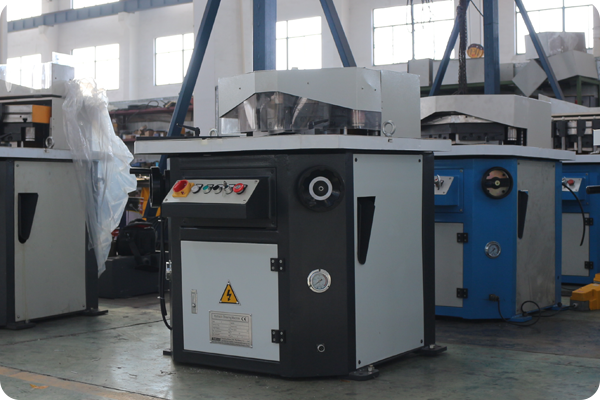
6.Extending the Lifespan: Best Practices and Strategies
6.1 Training and Documentation
The longevity and efficiency of notching machines are significantly enhanced by comprehensive training and thorough documentation. Training should encompass not only the operational aspects of the machinery but also the importance of meticulous record-keeping. Documentation serves as a vital resource for operators, providing a reference for the machine’s capabilities, maintenance procedures, and troubleshooting steps. It should be detailed and easily accessible, including diagrams, part lists, and step-by-step guides for routine maintenance.
Operators must be trained to understand and utilize this documentation effectively. This includes knowing how to update logs with maintenance and repair records, which is essential for tracking the machine’s history and identifying patterns that may indicate underlying issues. Training programs should also emphasize the significance of documentation in preserving the institutional knowledge, which can be invaluable when experienced operators leave or when training new personnel.
Moreover, documentation should be regularly reviewed and updated to reflect any changes in operating procedures or new insights gained from machine use. This ensures that all operators are working with the most current information, which is crucial for maintaining the machine’s performance and safety standards.
6.2 Scheduled Maintenance
A notching machine’s maintenance schedule is a preventive measure that cannot be overlooked. This schedule should be tailored to the specific model of the machine and its operational frequency. For instance, a machine that runs continuously requires more frequent checks compared to one used intermittently. The maintenance checklist should include inspection of hydraulic systems for leaks, sharpening of cutting blades, lubrication of moving parts, and calibration of control systems. It’s also beneficial to keep a log of all maintenance activities to track the machine’s health over time. Adhering to a strict maintenance schedule can significantly reduce the likelihood of unexpected breakdowns and extend the machine’s service life.
6.3 Quality Materials
The use of high-quality materials is essential for maintaining the integrity of notching machines. This includes the selection of premium cutting tools that resist wear and maintain sharpness over extended periods. High-grade lubricants can also play a pivotal role in reducing friction and preventing overheating of components. When choosing materials, it’s important to consult with the machine manufacturer for recommendations, as they can provide insights into the most compatible and effective options. Investing in quality materials may have a higher upfront cost, but it pays off in the long run by reducing the frequency of replacements and repairs.
6.4 Environmental Considerations
The environment in which a notching machine operates can have a profound impact on its lifespan. Factors such as humidity, temperature, and cleanliness need to be controlled to prevent adverse effects on the machine’s performance. For example, high humidity levels can lead to rust and corrosion of metal parts, while extreme temperatures can cause thermal stress and material deformation. Ensuring that the machine is housed in a clean, temperature-controlled environment can prevent these issues. Additionally, implementing dust extraction systems and regular cleaning protocols can keep the machine free from debris that could clog or damage sensitive components.
By focusing on these key areas, you can ensure that your notching machines operate efficiently for as long as possible, providing a solid return on investment and maintaining productivity in your operations. Remember, the longevity of your equipment is directly related to the care and attention it receives. Regular training, maintenance, quality materials, and environmental control are the
pillars of extending the lifespan of your notching machines.
Conclusion
This guide provides a basic understanding of notching machines maintenance. To learn more about metalworking machines, visit our tutorials, or visit the KRRASS supplier discovery platform to find potential sources or view details for a specific product.
